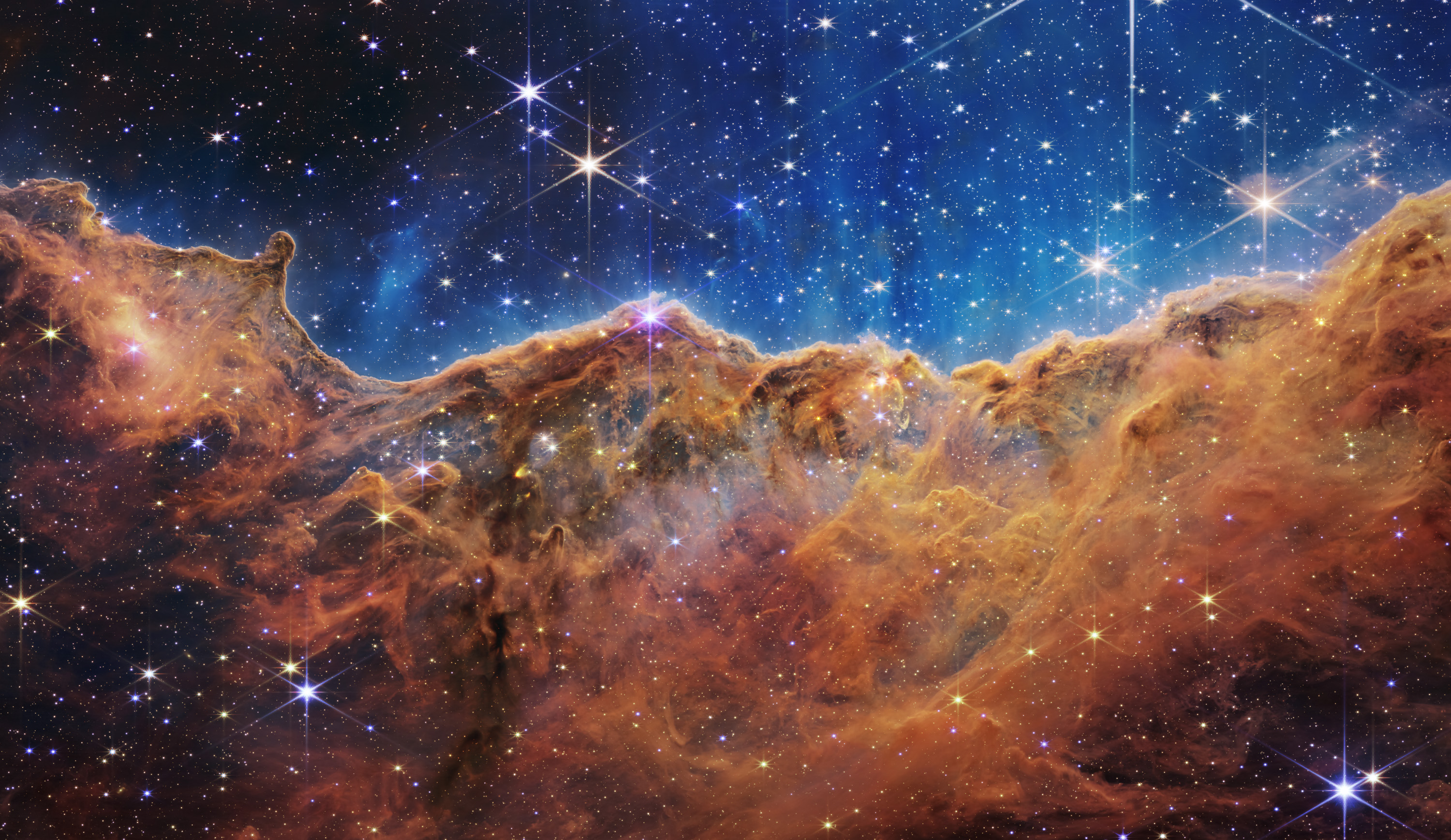James Webb Space Telescope: 10 Breakthrough Technologies 2023
A marvel of precision engineering, JWST could revolutionize our view of the early universe.

WHO
NASA, European Space Agency, Canadian Space Agency, Space Telescope Science Institute
WHEN
Now
Launched in December 2021 after decades of work, NASA’s $10 billion James Webb Space Telescope—a collaboration between the US, Europe, and Canada—is the largest telescope ever sent to space and some 100 times more powerful than its predecessor, the Hubble Space Telescope. It is also specifically designed to detect infrared radiation, allowing it to cut through dust and look far back in time to a period when the universe’s first stars and galaxies formed.
JWST is tailor-made for this kind of astronomical time travel. Its main mirror is 21 feet across, three times the diameter of Hubble’s, giving it far greater resolving power. It carries a sunshield as big as a tennis court to protect its mirror and instruments from the heat and light of the sun. To help it get to space, engineers designed JWST’s mirror and sunshield to fold up so they would fit inside a rocket fairing, unfolding after launch as the telescope made its journey to its final orbit 1.5 million kilometers from Earth.
Astronomers hope that with JWST, they will be able to piece together how the universe’s first galaxies came to be following the Big Bang. But that is not JWST’s only goal. The telescope is being used across the breadth of astronomy. It could provide unprecedented insight into planets in other solar systems, allowing us to work out what their atmospheres are made of. It will witness the birth of new worlds, take magnificent images of nebulae, probe the structure of galaxies, and much, much more.
New discoveries rain down almost every day and will do so for the lifetime of the telescope, estimated at more than 20 years.
Read more about how the James Webb Space Telescope broke the universe.
Deep Dive
Space
The quest to figure out farming on Mars
If we’re going to live on Mars we’ll need a way to grow food in its arid dirt. Researchers think they know a way.
NASA’s Europa Clipper spacecraft is set to look for life-friendly conditions around Jupiter
After a big setback, the spacecraft's team hopes to assess how well the moon could support life.
Life-seeking, ice-melting robots could punch through Europa’s icy shell
Researchers are working on technology that could follow NASA’s Europa Clipper mission and hunt for life in the ocean of Jupiter’s moon.
What’s next for NASA’s giant moon rocket?
The Space Launch System is facing fresh calls for cancelation, but still has a key role to play in NASA’s return to the moon.
Stay connected
Get the latest updates from
MIT Technology Review
Discover special offers, top stories, upcoming events, and more.